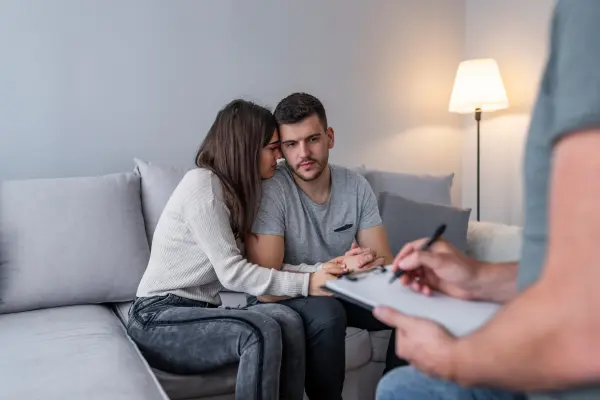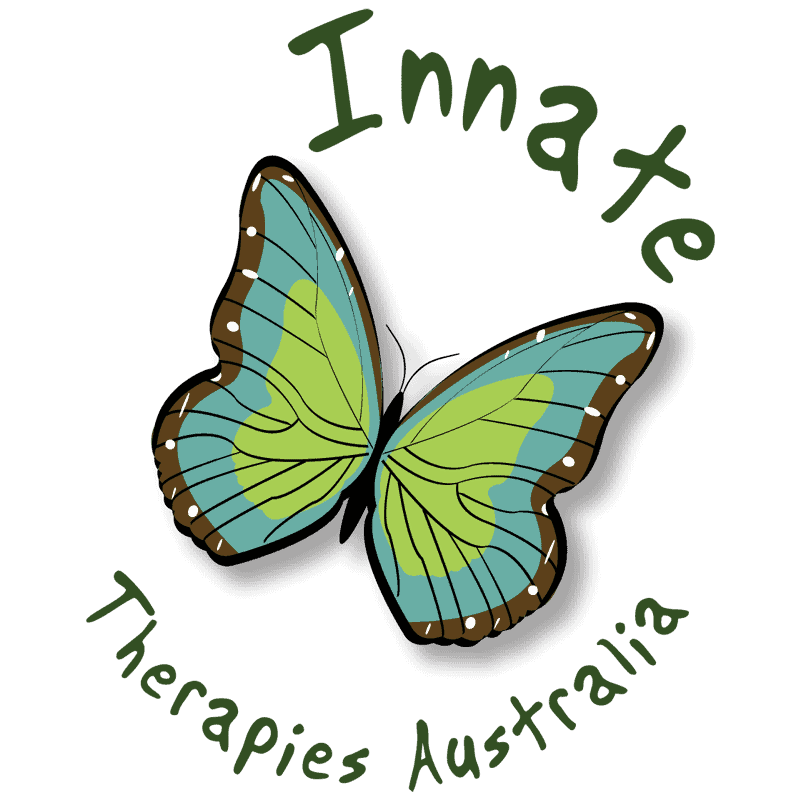It’s estimated 11% of Australians experience PTSD in their lifetime. That’s more than 280,000 people. Many people do not realise they have PTSD, and more than half affected will not seek treatment. But living with post-traumatic stress disorder can be made easier with treatment and there is a light at the end of the tunnel.
While not everyone who experiences trauma will develop PTSD, knowing the signs, what to do if you believe you may have PTSD or if a family is exhibiting symptoms is very important. This guide will help
you explore one of Australia’s most common mental health conditions and the effects on people and their families. What is post-traumatic stress disorder (PTSD)?
Post-traumatic stress disorder, or PTSD, is a mental health condition that may occur in people who have experienced or witnessed a traumatic event, series of events or been in certain circumstances. It can occur in people following natural disasters, accidents, mentally or physically violent acts, war or combat, and more. Someone experiencing PTSD has intense, disturbing thoughts and feelings related to that experience long after that event, which may include emotionally or physically harmful or life-threatening impacts to one’s mental, physical, social and spiritual wellbeing.
Signs of PTSD:
PTSD symptoms can vary in intensity. They can typically be recognised as intrusive thoughts, avoidance, alterations in cognition and mood, and alterations in arousal and reactivity. Specific signs someone may have PTSD include: Repeated, involuntary memories. Distressing dreams. Flashbacks of events. Avoiding reminders of traumatic events, including people, places, activities, objects or situations. Avoiding talking about traumatic events. Avoiding talking about their emotions regarding events. Inability to remember important aspects of traumatic events. Negative thoughts and feelings about oneself. Distorted thoughts about the cause or consequences of the event. Blaming themselves or others. Distrust of others. Feeling detached or estranged. Unable to experience positive emotions. Irritable or angry outbursts. Behaving recklessly or in a self-destructive way. Being overly watchful of surroundings in a suspecting way. Being easily startled. Having problems concentrating or sleeping. It’s important if you notice these signs in yourself or in someone you love to reach out to a healthcare professional or encourage them to do so.
Potential treatment for PTSD
It’s important to know most people do recover from PTSD and not everyone needs psychiatric treatment. The treatment you receive also depends on your symptoms and their severity. Some of the most common types of treatment for PTSD include: Cognitive Processing Therapy: An evidence-based therapy designed to focus on changing painful negative emotions and beliefs stemming from trauma. It provides a safe and encouraging environment for people to face memories and emotions, changing feelings of shame, guilt, failure, fear and more. Prolonged Exposure Therapy: A method to help people learn to manage triggers and cope with symptoms through the progressive, detailed imagining of the events of trauma in a controlled and therapeutic way. This has been a common treatment for veterans with war or battlefield trauma to help them overcome symptoms. Trauma-Focused Cognitive Behavioural Therapy: An evidence-based trauma therapy for children and teens involving trauma-sensitive intervention with relevant trauma therapies utilising cognitive behavioural, family and humanistic techniques. Eye Movement Desensitisation and Reprocessing: This trauma-focused psychotherapy helps those with PTSD to reprocess the memory of their trauma over approximately 3 months. The person is guided through questions about the traumatic memory, following the therapist’s finger or a light bar to recreate eye movement similar to REM sleep. Over time, this helps the person change their memory of the event and think less negatively. Group Therapy: Through sharing of experiences, reactions and emotions in a group setting, group therapy can help people with PTSD not feel as alone in their diagnosis, experiences or symptoms. Relationship and Family Therapy: A type of therapy that helps support couples and families through difficulties, trauma, emotions and struggles. It can help people with PTSD and those living with people with PTSD navigate the different situations they face in a healthy and positive way. Medication: Prescribed medications can often be prescribed to support people with PTSD symptoms, such as selective serotonin re-uptake inhibitors and serotonin-norepinephrine reuptake inhibitors antidepressants. Other medications may be prescribed to help with nightmares, sleep problems, lower anxiety and other symptoms in combination with other treatments. Alternative Therapies: Some people find alternative therapies, like acupuncture, yoga and animal-assisted therapy, helpful for calming their symptoms. These are often used in combination with traditional and psychotherapy treatments. It’s important to remember there is help out there and available if you are experiencing symptoms of PTSD. There is also support for families affected by their loved ones experiencing PTSD, which can include group or individual therapy.

How PTSD Can Affect Families
When you are caring or living with someone with PTSD, it is easy to forget you are also impacted by the disorder. While you may not experience the symptoms of PTSD itself, you have to learn the person’s triggers, how to support them and also in learning to understand your own feelings and emotions. The situation can also be different in every scenario, whether you’re a parent with PTSD, have a child with PTSD or are the spouse of someone with the disorder.
Parents with PTSD
Studies have shown children with at least one parent with PTSD in the household exhibit an increase in behavioural problems and are affected in adulthood. While the parent with PTSD may not wish to impact their child, their symptoms may cause them to detach or become distant from their child, and for the child to show signs of anxiety, stress or frustration. Children can often feel pressure to act a certain way to not cause further distress to their parents, causing them to withdraw or not express their own emotions. It’s important for children with a parent with PTSD to have a strong support network. This may be the other parent or family members, therapy, support groups and other lines of support when they need it. Family therapy can also help combine the parent’s treatment with guidance for their children, so there is mutual understanding and a healthy, safe environment to process struggles.
Children with PTSD
Post-traumatic stress disorder can impact people at any age. With children, they often rely on an adult to detect signs of PTSD, even when it’s not apparent a trauma has occurred. Many signs of PTSD can often appear like a development stage, such as trouble sleeping, outbursts or becoming withdrawn. It’s important for parents or carers who notice any changes in their child to seek professional advice and help to ensure there are no underlying problems. Children with PTSD may exhibit similar behaviour and symptoms as adults, such as withdrawing, becoming jumpy, having trouble being affectionate and even becoming violent. They may start to have problems at school, reenact events, act younger than their age and physical symptoms, like headaches or stomach aches. Many of these symptoms can impact other symptoms and be stressful for parents, so seeking guidance and treatment will help the whole family.
Spouse with PTSD
Most relationships face struggles. But having a spouse with PTSD can put additional stress on parents and the relationship. In some cases, partners with PTSD can become violent with intimate partners, or there may be a significant change in behaviour and attitude. They may withdraw, turn down intimacy or put blame on the other partner. While someone with PTSD should seek treatment, it may be helpful for their partner to also find support, whether through group sessions or therapy. Individual or even couple’s therapy can give you an outlet, but also support in how to reduce the impact of PTSD symptoms on the relationship. For example, learning what to do when you are frustrated with your partner can help ensure you don’t potentially enhance any symptoms they are experiencing, creating a domino effect.

How to support someone with PTSD
Some things you can do to help support someone with PTSD include:
Learn to identify the person’s triggers and try to minimise their exposure to them.
Be sympathetic and empathetic, especially when they are experiencing a flashback.
Avoid telling them how to feel or giving unsolicited advice, as this can be frustrating or confusing for them.
Avoid minimising their trauma or telling them to ‘just not think about it’ or ‘snap out of it’.
Encourage them to seek treatment or attend treatment with them if they are concerned.
Listen when they are opening up about the events, their feelings and what’s happening, encouraging them to open up without forcing them to do so.
Know it’s okay to take time for yourself and it’s okay to walk away. It’s important for you to protect your own emotions and self when supporting, caring for or living with someone with PTSD, and taking time for yourself is important.
Seek therapy or support for yourself and those in the environment if needed. PTSD can have effects on the entire household, so ensuring there is ample support for each person, including the person with PTSD, is important.
If you are seeking support or therapy for someone with post-traumatic stress disorder or for those supporting them, Innate Therapies Australia is here to help and guide you. Reaching out is your first step in getting the support you need.


